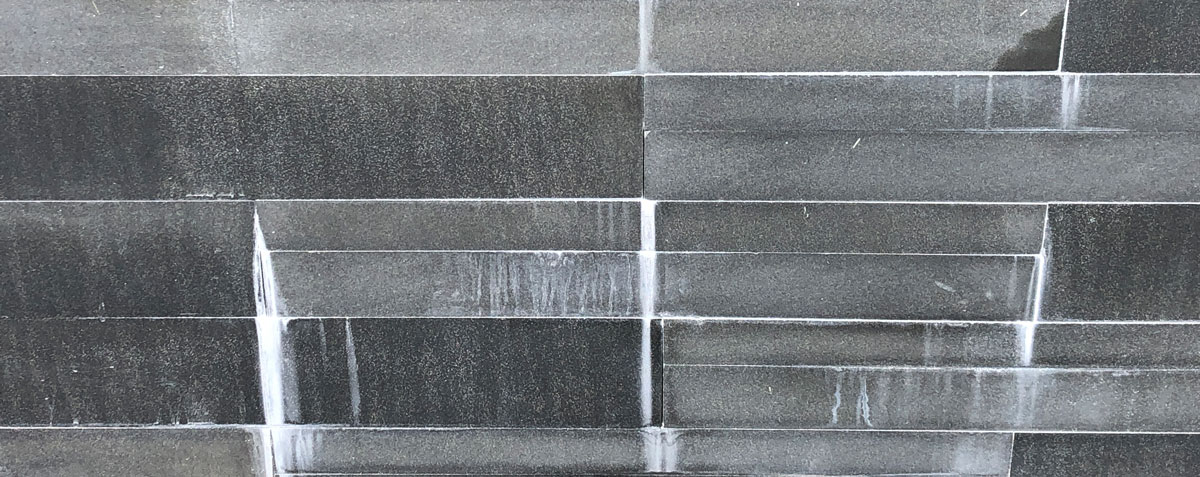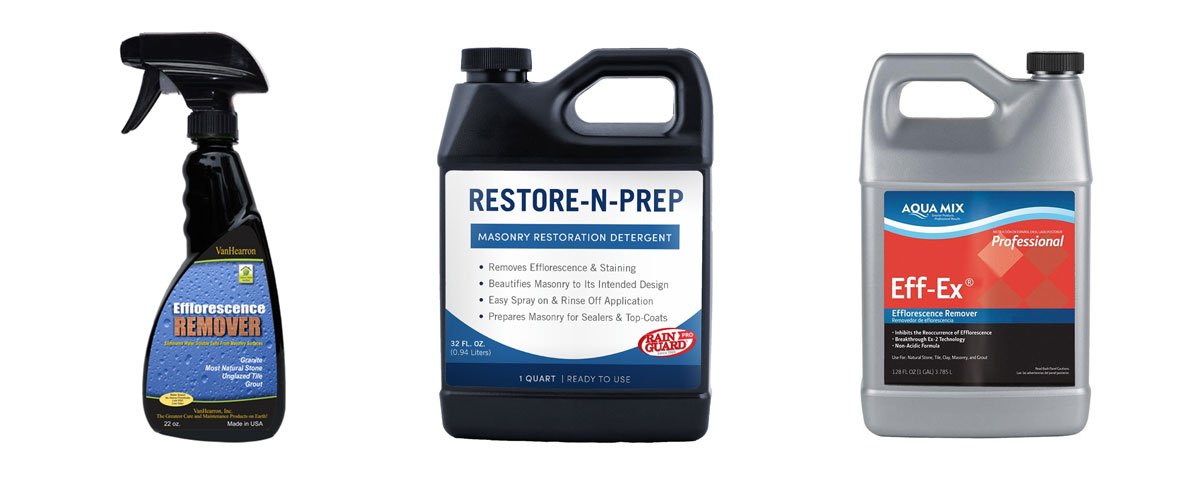Understanding Efflorescence on Stone Veneer
If you’ve been in the industry as long as we have at Norstone, then you will have no doubt heard about Efflorescence at least a handful of times over the years. If you’ve ever seen white residue on the face of a stone veneer application, be it 100 years old or brand new, 9 times out of 10 it’s Efflorescence.
So, what is Efflorescence?
Efflorescence is a chemical process that occurs when cementitious materials, such as cement block, brick, or even thinset or grout come into contact with moisture for extended periods of time, then come into contact with the hot sun, resulting in a white residue on the surface of your stone veneer application.

Here is how this process works:
- Stone Veneer is selected for an Exterior Application and is adhered to a cementicious substrate, be it CMU, brick, concrete board, or cast-in-place concrete. It is adhered using a polymer modified thinset. These cementitious materials (substrate and thinset) all contain various amounts of sand, silica, and lime, along with other trace minerals.
- Rain water and the elements saturate the stone veneer application.
- The Sun heats up various parts of the stone application, essentially drying and baking the moisture out of the setting bed.
- As the sun heats the surface of the stone, minerals travel through to the face of the stone from the back of the thinset.
- When the moisture fully dries, voila you have efflorescent salts and minerals on the face of the stone.
So while at first it my appear as though the stone is leaching, in fact the stone is acting as a membrane, and the minerals and salts are traveling through it from the substrate.
How do you remove Efflorescence from Stone Veneer?
Most Efflorescence can be cleaned with specialized Efflorescence cleaners, which are designed to attach the salts and minerals that often make up Efflorescence. Because Natural Stone can be made up of many different types of minerals itself, it is recommended that you confirm with the manufacturer of your stone veneer which cleaner will best suit your needs. Make sure to always test the clean in an inconspicuous area first to make sure the results are as intended.

How do you prevent Efflorescence on a Stone Wall?
The best way to manage Efflorescence is to try to prevent it from happening in the first place. This can’t always be done, but there are a few key considerations you must pay attention to if Efflorescence is a concern:
- Moisture Management. Since Efflorescence occurs only where there is moisture, you must have a game plan for moisture management for your project. This means: (a) Use a waterproofing membrane on your substrate (b) use flashing around all windows, doors, and exposed roof lines (c) ensure your gutter/draining system is channeling water away from your stone veneer application, not into it.
- Use only Cured Concrete, or allow your CMU/Poured-in-place walls to properly cure before installing your stone veneer. Because young concrete can often have more volatile compounds when exposed to water, it can often be the source of Efflorescence. Ensure your walls have completely dried and cured before installing your stone veneer.
- Be mindful of adjacent sand-set paver beds. If you’re installing stone veneer on a pool wall which directly abuts a paver bed, be EXTRA careful about the materials you use and moisture management in this scenario. Sand-set paver beds hold moisture for extended periods of time, which can make them notorious contributors to Efflorescence.
- Be mindful of walls facing South or West which also get a lot of moisture. Because the sun hits Southern and Western facing walls the hardest, these will be more susceptible to efflorescing. Take extra care to ensure these walls have good moisture management practices in place.
I have Efflorescence on my stone walls, what now, and do I have to live with this forever?
If you are experiencing efflorescence on your walls, the best thing to do is contact the supplier for your Stone Veneer and your contractor to formulate a plan to clean it and maintain it. Once efflorescence starts, it often will require repeated cleanings over the years. Eventually, our experience is that the salts and minerals in the specific area that is efflorescing does tend to run its course. Hopefully this article is a valuable resource for better understanding efflorescence and how to manage it.
.png)



